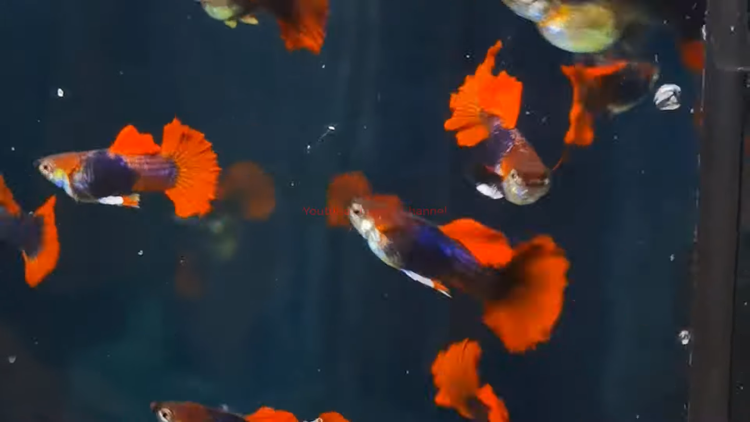How to Breed guppies and Prevent Inbreeding Depression?
- Jun 11, 2023
- Anshika Mishra
- 719 0 0

Guppies are popular aquarium fish that come in various colors and patterns. They are easy to breed. But they also have a high risk of inbreeding depression - which is a reduction in fitness due to the accumulation of harmful recessive alleles.
Inbreeding depression can affect many traits, such as growth, survival, reproduction, and disease resistance. In this article, we'll learn how to breed Guppies and prevent in-breeding depression step by step:
Step 1: Start with a larger and more diverse population of Guppies
You can buy Guppies from different sources or mix different strains to increase the genetic variation in your population. Avoid buying Guppies from pet stores that keep them in small tanks with poor water quality, as they may be already inbred or unhealthy.
Step 2: Provide optimal conditions for your Guppies
Guppies need clean water, adequate space, a balanced diet, and suitable temperature and pH to thrive. You should also avoid stressors such as over-crowding predators or aggressive tank mates that can lower their immune systems and make them more susceptible to diseases and parasites.
Step 3: Monitor your Guppies for signs of inbreeding depression
Some common signs are reduced fertility, smaller size, deformities, dull colors, and increased mortality. If you know any of these signs, you should take action to reduce the level of inbreeding in your population.
Step 4: Introduce new Guppies from different sources every few generations
This will help to maintain or increase the genetic diversity in your population and prevent the loss of rare alleles. You can also use genetic markers such as microsatellites or SNPS to measure the genetic diversity and relatedness of your Guppie and select the most suitable breeding pairs.
Step 5: Avoid mating close relatives such as siblings or cousins
This will reduce the probability of producing offspring that are homozygous for deleterious alleles. You can also use pedigree analysis or genetic markers to identify the degree of relatedness in your Guppies and avoid mating individuals that share more than 25% of their genes.
Step 6: Use outcrossing or cross-breeding techniques to increase heterosis
This is the opposite of inbreeding depression, where offsprings from genetically similar parents show higher fitness than their fitness. You can outcross your Guppies with different strings or species that are compatible such as endless or mollies that create novel hybrids that may have enhanced traits such as size, color, or disease resistance.
Conclusion
By following these steps, you can breed healthy and beautiful Guppies and prevent inbreeding depression in your population. Remember that genetic diversity is essential for the survival or adaptation of any species, especially in captivity, where natural selection is reduced.






About author